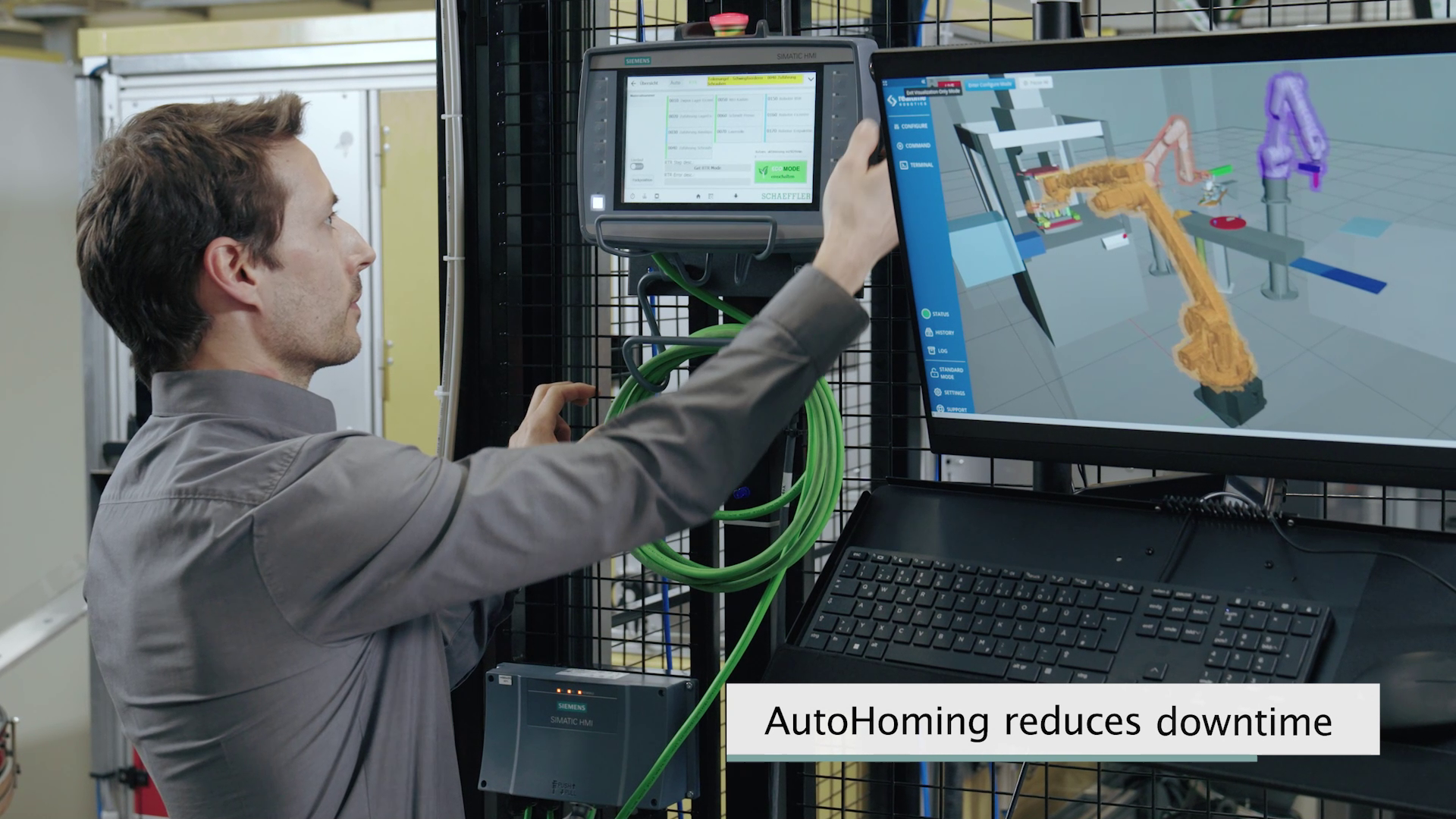
Insights
Eliminating Collisions and Improving Operations for Schaeffler Group
Long-time readers of this blog might remember that we began working with the Schaeffler Group, a leading global supplier to the automotive and industrial sectors, a few years ago. They had evaluated our RapidPlan robot motion control and collision avoidance software as a way to help them utilize multiple robots together at the same time, improving throughput and eliminating costly collisions.
In fact, we initially wrote about their usage and excitement for the technology here.
Well, we recently checked in with the team for an update on how their use of RapidPlan is progressing, and learned that they’ve seen some tremendous results thus far. We even had the opportunity to film the Schaefler teams discussing RapidPlan and what it enabled them to accomplish. Check out that video here:
- Automatic path generation
- Automatic collision prevention
- AutoHoming reduces downtime
- Support from design through production
- Automatic complex interlock generation
- Higher machine utilization
- Increased production
- Improved planning
- Reduce variability
As you can see in the video, Schaeffler has three industrial robots working in a very tight workspace, interacting with one another to accomplish their tasks. RapidPlan automatically generates collision-free work paths for the robots, optimizing their performance and eliminating the worry that expensive equipment will collide with each other or any other obstacles in their environment, and halt production in its proverbial tracks.
As anyone who’s familiar with robotics knows, interlocks are time-consuming to program, increase cycle time, and must be re-calculated every time there’s a change. With RapidPlan, interlocks are automatically calculated for Schaeffler, allowing robots to operate within much closer proximity and to cycle through changes much faster. This also made it much easier for the company to set up and manage operations.
One of the biggest advantages that Schaeffler reports thus far is the AutoHoming feature of the software. When there is a fault, robots traditionally need to be jogged back to a “home” or “maintenance” position. This used to be manual, time-consuming, and required a skilled robotics technician. But with AutoHoming, Schaeffler’s robots can either find collision-free paths to return to a home position from anywhere in the sequence. If possible, they can then automatically restart where they left off from, drastically reducing downtime.
Overall, both engineering and production teams are thrilled with the results thus far – and we’re thrilled to be making these revolutionary advances in their use of robotics possible. Plans are underway for additional projects to use RapidPlan as the benefits are clear.
So watch the video, see how our collision-avoidance and automatic motion planning software has helped Schaeffler already, and drop us a line so we can explore how to optimize your automation efforts as well.